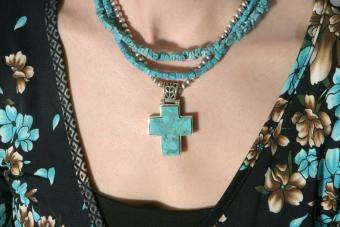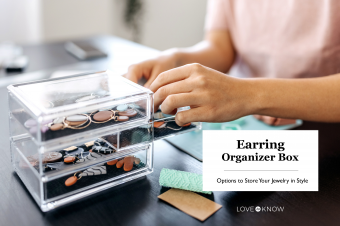
Nothing signifies simple, classic elegance like pearl necklaces. There was a time when high prices meant that only the well-to-do could afford pearls, but pearls are now much more affordable. Discount internet sites and an influx of inexpensive, cultured freshwater pearls on the market have made genuine pearl necklaces accessible to most budgets.
Pearl Types
People usually picture creamy white, round Akoya pearls when they think of pearl necklaces. However, there are several different kinds of pearls that make beautiful, eye-catching necklaces. Freshwater pearls are formed inside oysters raised in rivers and lakes rather than saltwater and come in colors like pink and peach in addition to white. Pearls from the oyster pinctada margaritifera are called black pearls, and while some are indeed black, others range in color from gray to peacock blue. Black pearls are also sometimes called Tahitian pearls.
When considering a pearl necklace for purchase or a gift, make sure that all the pearls are roughly the same color, unless there's an intentional difference, such as a necklace of white pearls with one large black pearl in the middle.
Pearl Necklace Lengths
There are many different lengths of pearl necklaces, each with its own name:
- Collar or Dog Collar - This type of necklace consists of several strands of pearls worn snugly around the neck.
- Choker - A choker is 14 to 16 inches long and lies at the collarbone.
- Princess - A princess length necklace is 18 inches long and rests below the neck.
- Torsade - These necklaces are made up of several strands of pearls twisted together.
- Bib - Bib necklaces consist of several strands of pearls lying below the neck. They are similar to collars, but longer.
- Matinee - Matinee length necklaces are in the range of 20 to 24 inches.
- Opera - This length of necklace ranges between 30 to 36 inches. An opera length necklace is generally worn for formal occasions, but can be worn doubled for a less formal look.
- Rope - Dramatic rope necklaces are the longest length, reaching more than 36 inches. They can be worn full length, knotted, doubled, or with a shortener.
Pearl Sizes
Pearls can be as small as 1mm, but most pearl necklaces are in the 7mm range with larger pearls being generally more valuable than smaller pearls of similar quality. While it is difficult to assemble a necklace of pearls that are exactly the same size, the pearls usually vary by only 0.5 to 1 millimeter. Another popular look is a graduated pearl necklace, with smaller pearls near the clasp and larger pearls in the center of the necklace.
Purchasing Your Pearls
You can purchase pearls at many fine jewelry stores and online retailers. Like most jewelry, pearls vary greatly in price and style depending on the size of the pearls, how many are included in a strand, and their quality.
- BlueNile.com carries a wide range of pearls, ranging from solitaires paired with gemstones to 18-inch strands.
- Kay Jewelers features an earring and necklace set.
- Amazon has dozens of pearl necklaces, including this 20-inch matinee strand.
- Maui Divers Jewelry has a wide range of Tahitian black pearls ranging from dark blues to grays.
Caring for Pearl Necklaces

Pearls are extremely delicate gems, but with proper care, a beautiful pearl necklace will maintain its lustrous beauty. Here are a few guidelines:
- Pearls can be damaged easily, so they should not be tossed into a jewelry box where they can be scratched by the metal prongs and clasps of other jewelry. It is best to keep a pearl necklace in its own fabric pouch.
- The natural acids in human skin can be harmful to pearls over time, so pearls should be wiped with a damp cloth after wearing.
- Hairspray, perfume, and cosmetics can damage pearls, so put the pearls on only after applying these products.
- Do not go into swimming pools with pearls since the chemicals in the pool water can be harmful.
- Do not store pearls near heat sources.
- Never clean pearls with ultrasonic cleaners or jewelry cleaning solution unless it specifies that it is safe for pearls.
- Pearls should be professionally restrung periodically, since an old, worn string is more likely to break.
Taking care of your pearls can help keep them looking beautiful and may even preserve them enough to become an heirloom for the next generation in your family.







